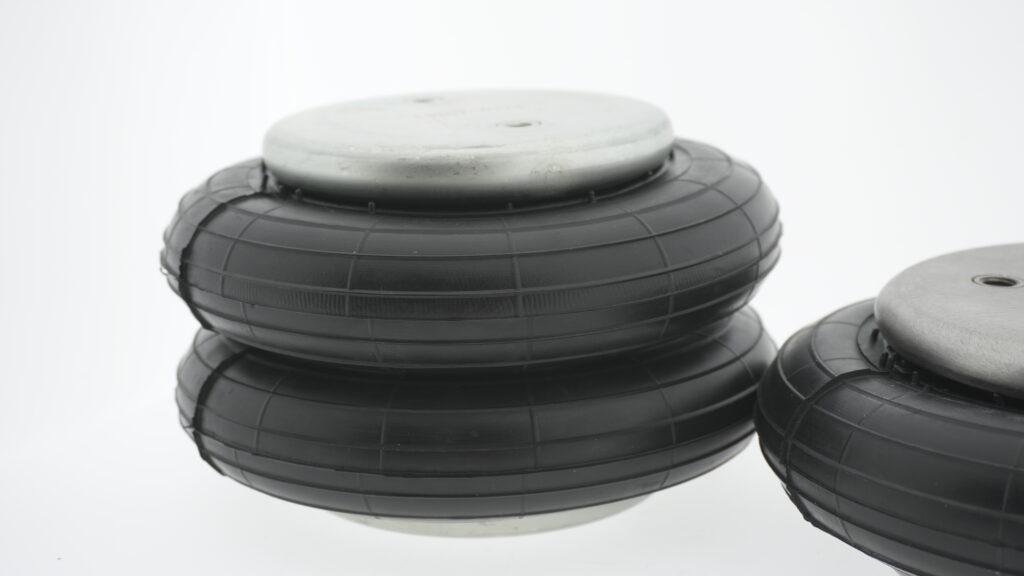
Understanding the Critical Role of Air Bellows Safety
Ensuring the safe operation and maintenance of air bellows is essential to prevent workplace hazards and optimize performance. While these components offer reliable force generation and vibration isolation, improper handling can lead to failures, reduced efficiency, and potential safety risks. Our safety training emphasizes best practices for installation, operation, and preventative maintenance to enhance workplace security and extend product lifespan.
The maximum pressure rating for standard air bellows is 8 bar, while high-strength versions handle 12 bar. The natural frequency of these components can be as low as 1.5 Hz, ensuring excellent vibration isolation. Misalignment tolerances reach up to 30 mm, making them ideal for applications requiring flexibility. The maximum force output depends on size, reaching values exceeding 450 kN per unit. Materials include NR/SBR, NBR, EPDM, and CIIR, each suited for specific environmental conditions.

Proper Handling and Storage Guidelines
Handling air bellows correctly prevents premature wear and mechanical damage. Operators must adhere to the following precautions:
- Avoid sharp tools near the rubber surface to prevent punctures.
- Store bellows in a cool, dry place, away from ozone-producing equipment and direct sunlight.
- Check pressure ratings before installation to ensure compliance with design specifications.
- Inspect mounting plates and connections for alignment to avoid stress concentration on rubber sections.
- Use protective covers when bellows are installed in abrasive environments to prevent contamination.
Rubber compounds degrade under extreme conditions. The recommended temperature range for standard NR/SBR bellows is -40°C to +70°C. High-temperature EPDM versions tolerate up to +115°C. Improper storage reduces lifespan and performance. Rubber should not be stored near electric motors, UV exposure, or extreme humidity. Bellows should be supported to prevent deformation. Improper handling causes internal stress cracks and uneven wear, leading to early failure. Regular inspections and controlled storage environments significantly improve service life and performance.
Installation Safety Measures
Correct installation is crucial to air bellows performance and longevity. Key factors include:
- Align air inlets properly to avoid strain on fittings.
- Do not exceed the maximum pressure rating to prevent overexpansion.
- Check for lateral misalignment, ensuring flexibility is utilized without excessive strain.
- Tighten all fasteners evenly to distribute loads correctly.
- Follow manufacturer guidelines for specific mounting requirements.
Air bellows mounting systems come in dismountable bead rings, crimped closures, or integral metal flanges. Each design has different strength properties and installation procedures. Bolt hole patterns and stud configurations must match the mounting structure to ensure proper load distribution. Maximum allowable stroke varies per model, with values ranging from 20 mm to over 375 mm. Installing bellows beyond their rated stroke causes permanent deformation and material fatigue. Pressure regulation systems should always be used to control force output and prevent overloading. Training personnel to recognize improper mounting practices enhances workplace safety and extends component longevity.
Operational Safety Best Practices
During operation, safety measures should be followed to prevent mechanical failure and system inefficiencies:
- Monitor pressure variations to avoid exceeding allowable limits.
- Check for leaks in air supply connections regularly.
- Observe for signs of wear, such as cracks, abrasions, or deformations in rubber elements.
- Ensure proper height control to maintain consistent isolation performance.
- Do not use incompatible fluids—only approved media should be used in air bellows.
Compressed air systems must include pressure regulators and filters to remove moisture and particulates. Oil contamination deteriorates rubber compounds, reducing service life. Static and dynamic loads must stay within rated specifications to avoid excessive deflection. Height control systems maintain consistent stroke efficiency, ensuring optimal vibration isolation and load distribution. Misalignment greater than 25° results in excessive stress on the rubber structure. Noise reduction capabilities depend on installation stiffness and system pressure, ensuring operational efficiency. Routine visual checks and pressure monitoring prevent sudden failures and costly downtime.
Preventative Maintenance Strategies
Routine maintenance extends the operational life of air bellows and reduces downtime. Implementing a structured approach includes:
- Regular visual inspections for early detection of defects.
- Cleaning with mild detergents to remove dirt and debris without degrading rubber compounds.
- Checking for corrosion in metal components, especially in high-moisture environments.
- Replacing worn-out components before failure occurs.
- Lubricating moving parts where necessary to ensure smooth operation.
Inspection intervals should align with system usage levels. High-cycle operations require checks every three months, while low-cycle systems can be inspected annually. Crimped bellows should be checked for deformation, while bead-ring types must be inspected for fastener loosening. Air supply filtration systems should be cleaned to prevent moisture buildup, which degrades rubber compounds. High-strength bellows with four-ply reinforcement offer increased durability but require proper installation torque. Avoid harsh chemical exposure, as it affects rubber flexibility. Scheduled maintenance minimizes unexpected failures, improving efficiency and extending product longevity.
Common Safety Hazards and Mitigation Strategies
To ensure risk-free operation, it is crucial to identify and mitigate common hazards:
- Overpressure risks: Always use pressure regulators and relief valves.
- Abrasion and puncture: Install protective shields in environments with high particulate contamination.
- Fatigue failure: Monitor operational cycles and replace air bellows before reaching their lifespan limit.
- Incorrect mounting: Train personnel to follow mounting specifications strictly.
- Chemical degradation: Avoid exposure to aggressive chemicals unless specified as compatible with the elastomer compound.
Improper pressure regulation results in premature fatigue, reducing cycle life expectancy. Excessive vibration levels indicate misalignment or improper mounting, requiring immediate correction. Rubber compound selection should match operating conditions to prevent thermal degradation. Noise-related issues can be minimized using flexible mounting solutions. Regular operational audits help detect early warning signs of component fatigue, ensuring continued reliability and safety.
Proper training, inspection, and maintenance of air bellows are critical to workplace safety and system efficiency. Operators and maintenance personnel must follow best practices to mitigate risks, prolong service life, and maintain optimal functionality. By implementing rigorous safety protocols, businesses can ensure smoother operations, reduced downtime, and enhanced safety standards.
